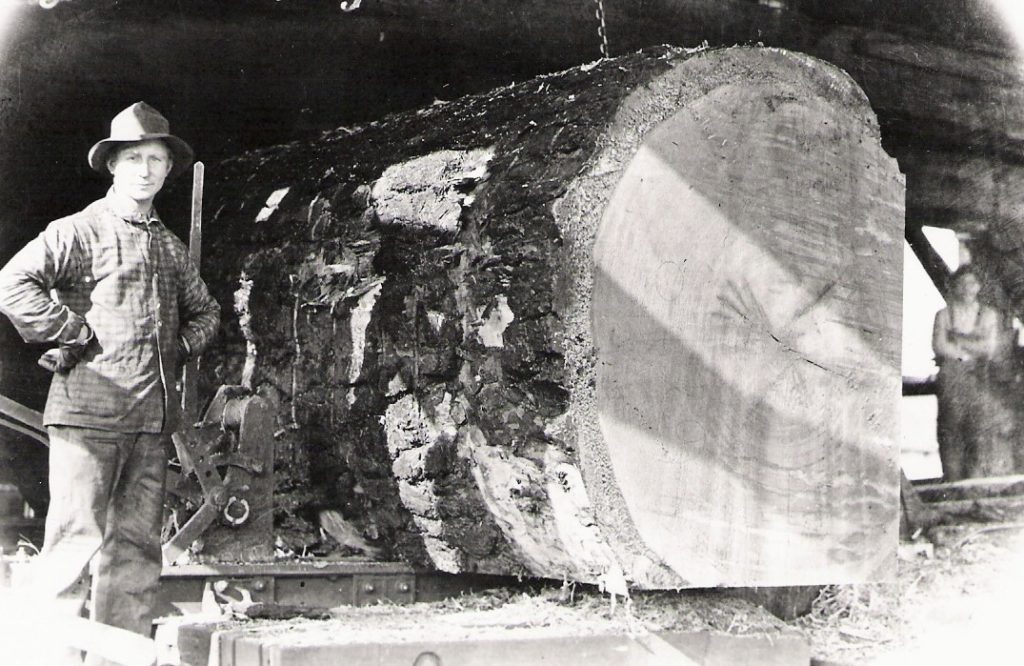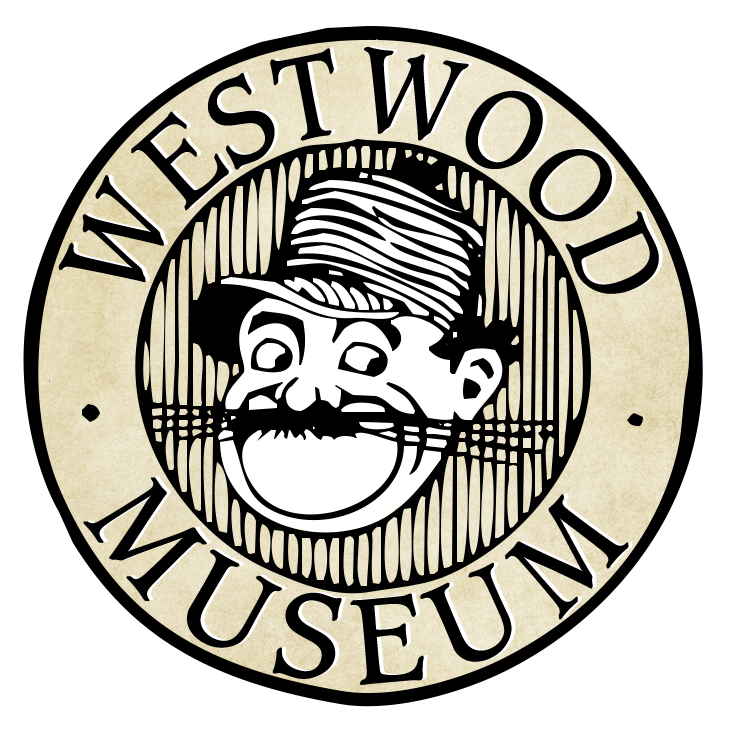Historic Walking Tour
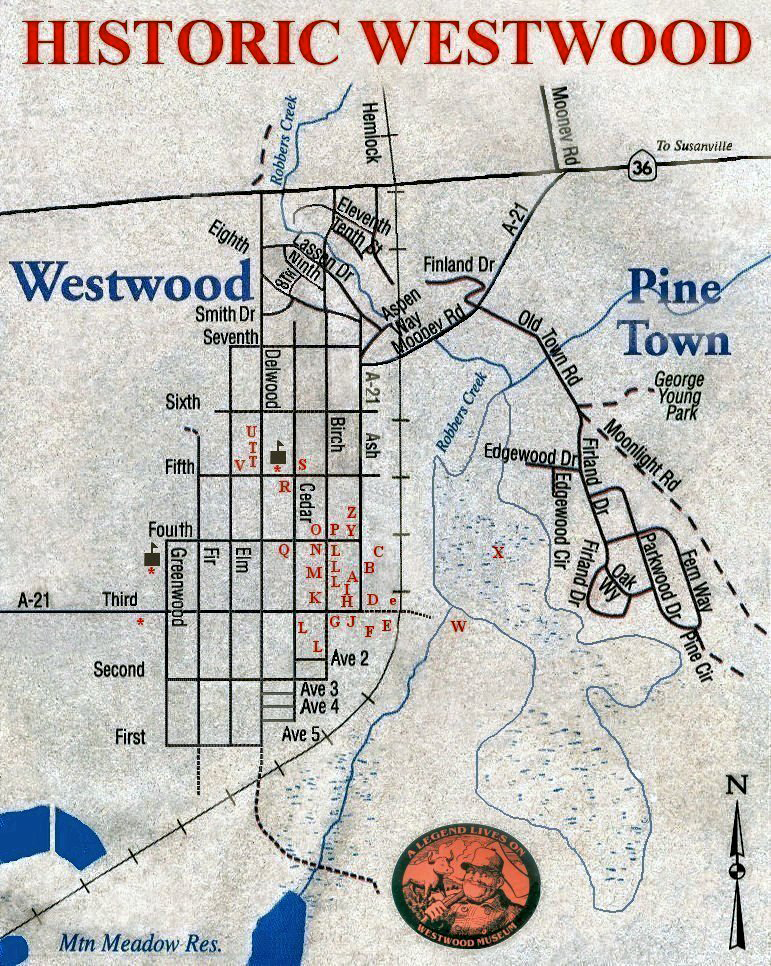
A. MUSEUM BUILDING: Historically this building, built in 1920, served as a cafeteria seating over 700 at one time. There was a bakery in the north end of the building which furnished all the baked goods for the restaurants, cookhouses, and community needs. By 1924, it was producing 1215 loaves of bread per work day, and dozens of pies, cakes, cookies and French pastries.
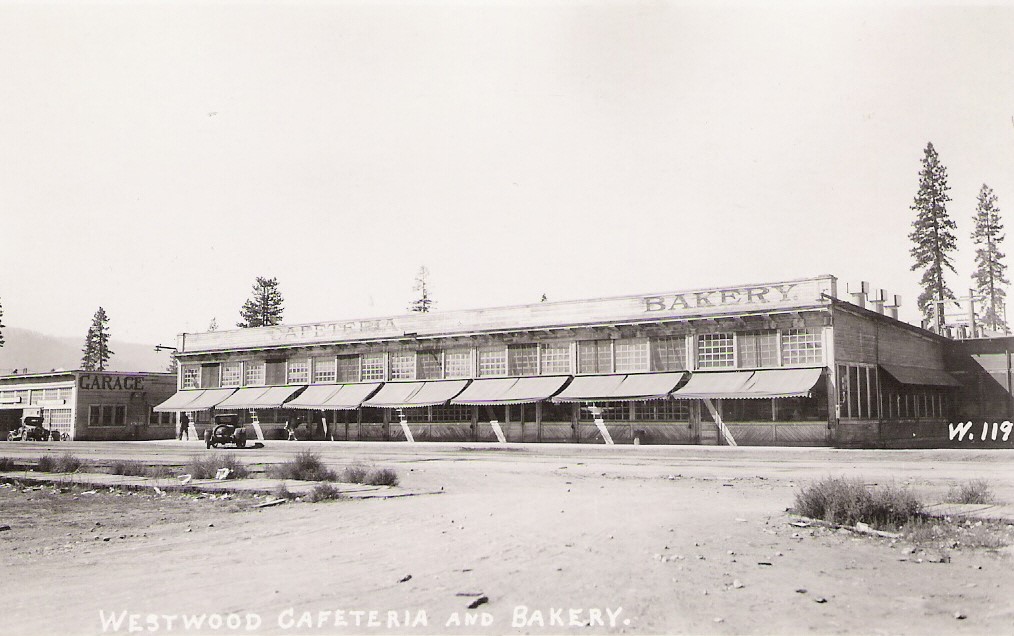
B. HARDWARE: This building was originally a mortuary. It was built about 1917 and served as a mortuary well into the 1950s. It was then used as a county court building and sheriff’s office before it became a hardware store.
C. CARPENTER AND PAINT SHOP: Just to the rear of the hardware store was the carpenter and paint shop for the mill and town. All the homes and buildings were company-owned. So, all the repairs and modifications were done by the carpenter shop. The original 600 plus homes, retail buildings, bunk houses and mill buildings were constructed by a carpenter force of over 100 men.
D. THE BIG STORE (FOUNDATION): This building was started in 1913 and had its grand opening in 1914. It was an “indoor mall” with 18 departments, including all dry goods and groceries. The building was torn down in 1962. Under this one roof, about one block long and one block wide, you could find everything needed to supply the town, from tires to fancy dresses. It included the building for the post office.
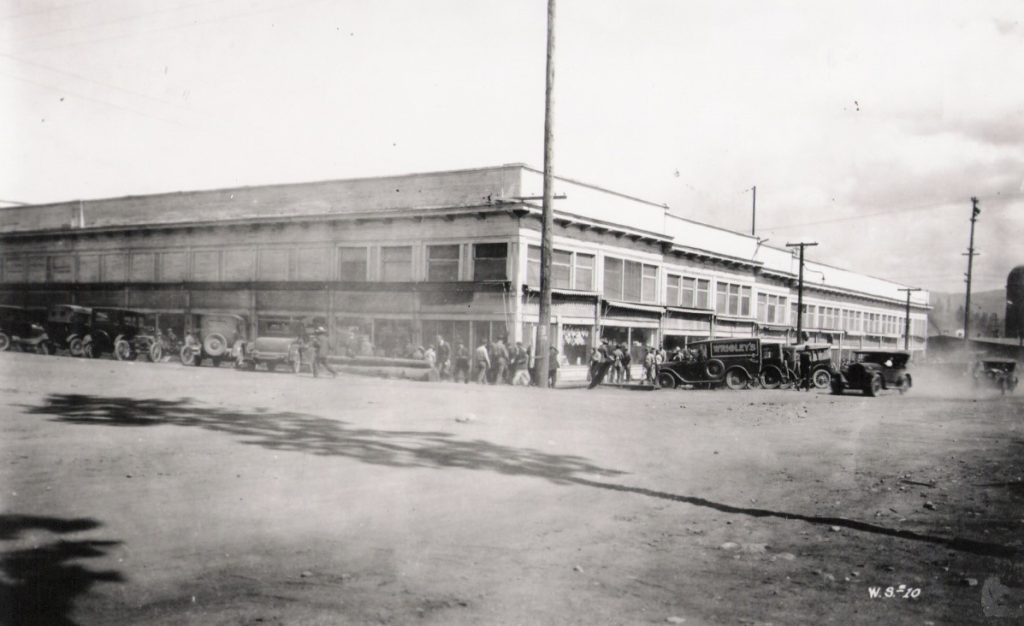
E. VISITOR CENTER: This is a reproduction of the original Westwood Depot. The original depot was located about 100 yards north where the BNSF Shop is now. It was built in 1914 and torn down in 1974.
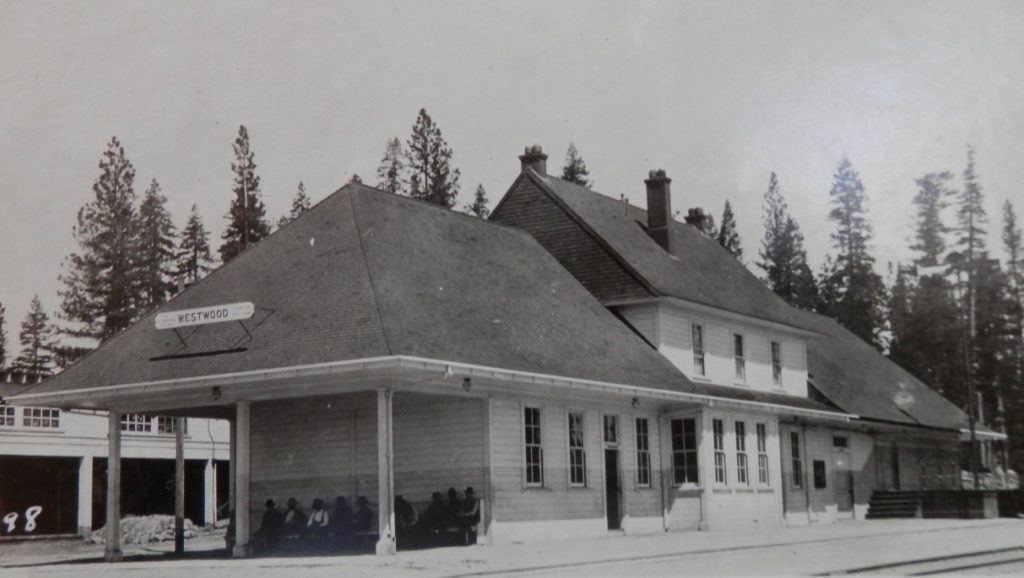
F. FLETCHER AND EVELINE WALKER’S HOME: This is the first home built in the new town of Westwood in 1913. Fletcher Walker, the operating manager, his wife Eveline, and their four sons (Fletcher, Jr. “Cub”, Kenneth, Theodore, and Norman) moved into the almost completed home and remained there until 1945. The home has been occupied by several others during the years. It is now restored and serves as a bed and breakfast, restaurant and gift shop.
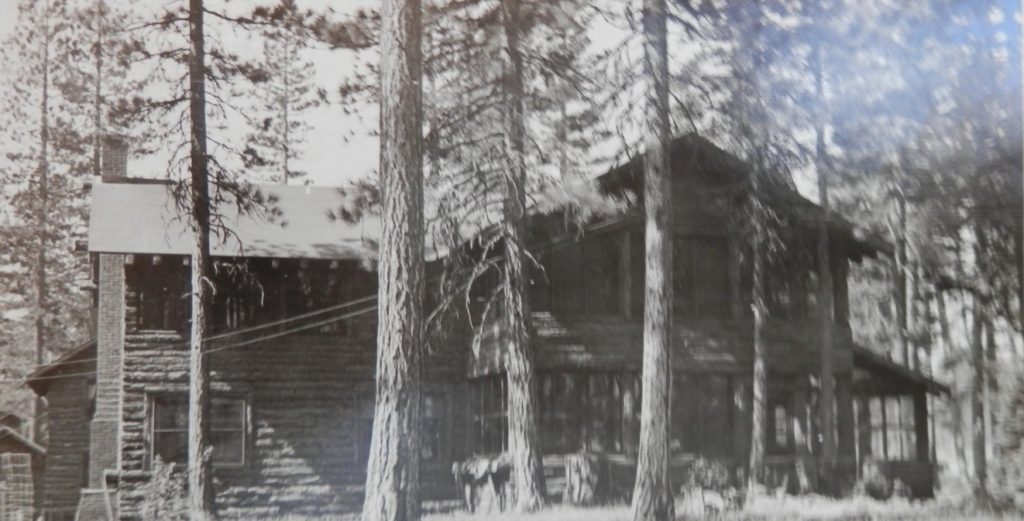
G. COMMUNITY CENTER: This was originally the home of Ted Walker, the oldest son of Fletcher and Eveline. The extension to the west was built in 1976 as a community hall. The original home now serves as a Sheriff’s Office and pre-school.
H. FIRE HALL: Built in 1914 and used continuously as a fire station serving all of Westwood, even to the current day. The second floor was used as a living and recreation space for single, volunteer firemen. The fire chief lived in the cabin next to the fire hall.
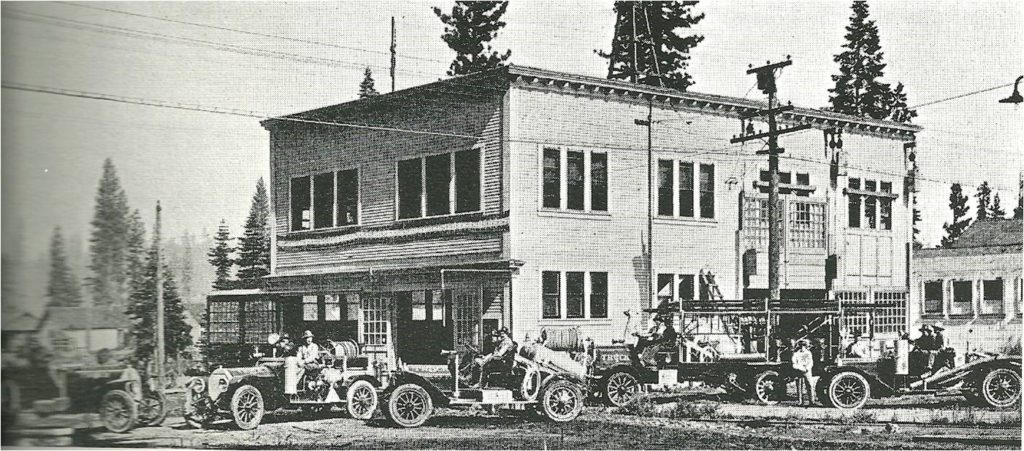
I. JAIL: Behind the fire hall is the jail building. It was built of poured concrete around 1915 and used until about 1960. It is currently used as a storage space by the fire department.
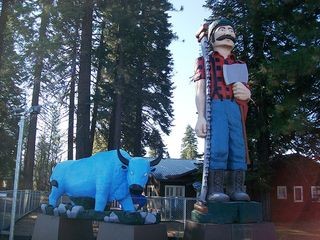
J. PAUL BUNYAN AND BABE THE BLUE OX: These statues represent the logo for the Red River Lumber Company in Westwood. This logo was created by William Laughead who worked in the advertising department for Red River. He also did the art work for small booklets illustrating many of the tall tales of Paul Bunyan and his logging operations as advertising for Red River Lumber Company. These statues were dedicated to the legend of Paul Bunyan and the Red River Lumber Company in Westwood on July 4, 1988.
K. THE CABINS: These cabins at Birch and Third Street were built about 1914. This is only a small number of the many cabins of this type built throughout the town. Many of these cabins were originally bunk cabins for loggers in the woods. Two of the loggers’ cabins were put together with a bathroom built between them. They were used for couples or small families.
L. BUSINESS AND APARTMENT BUILDINGS: Historically these were bunkhouse for workers in Westwood. These are the remaining structures left from a total of 23 original buildings. The bunkhouses were steam heated (with steam from mill operations), had showers, linen, laundry and janitorial service. The bunkhouses were used from 1914 through the early 1950s.
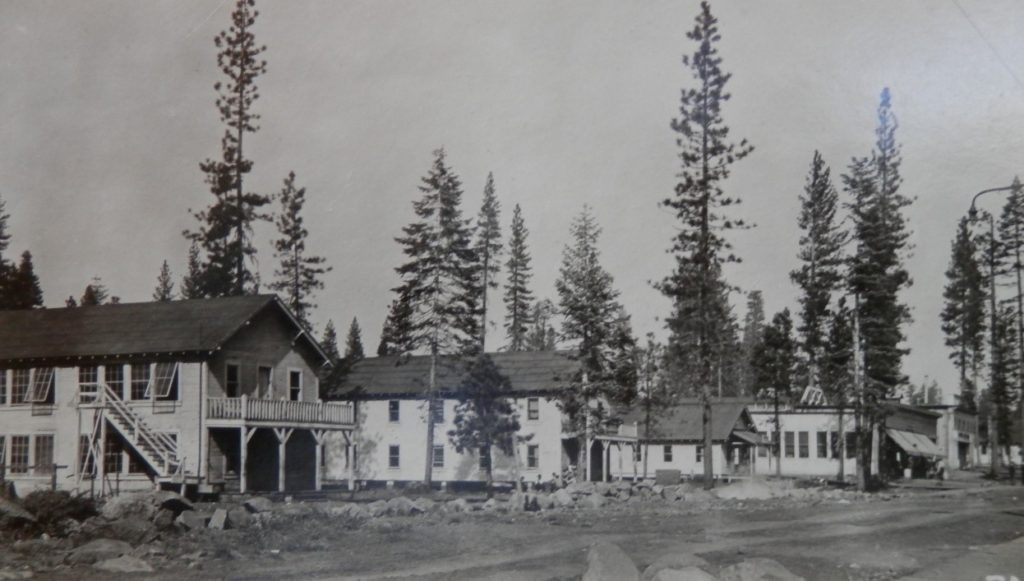
M. THE CLUB: This retail building was originally a social hall for male employees only. The first Club was built in 1914 and burned in 1944. It was rebuilt and used as a recreation building containing a restaurant, bowling alley, card room, writing room, beer bar and pool room. This use continued until 1957 when it was reconfigured and became a retail building.
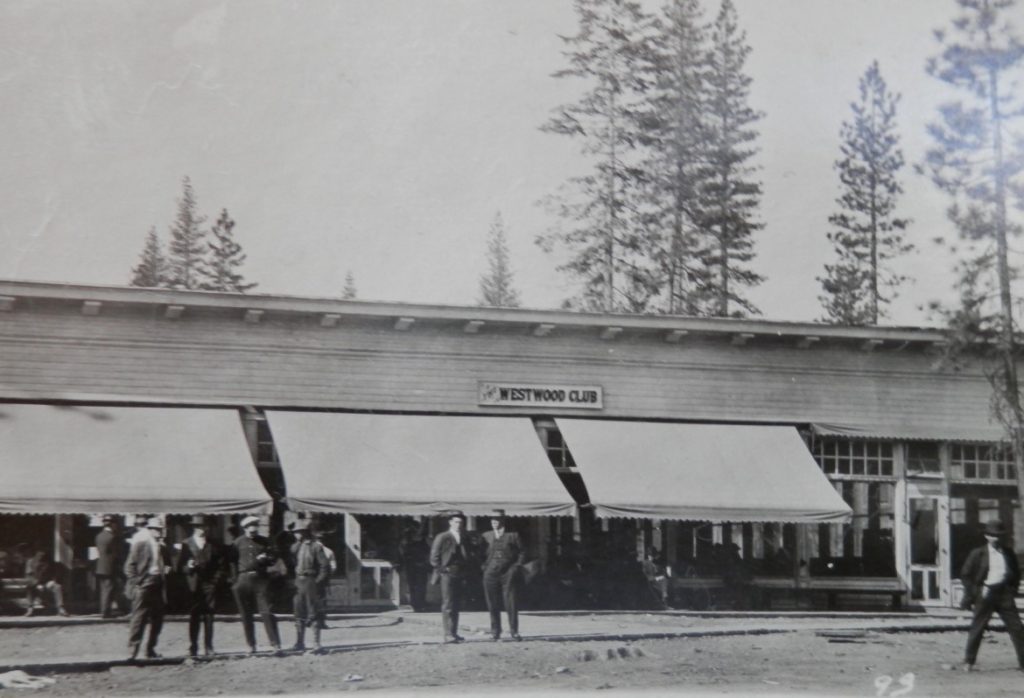
N. OPERA HOUSE: The lawn area beside the store was originally home for an Opera House, built in 1914 with a seating capacity of 500. There is no record of an opera being held there, but it was used by travelling entertainers. It was also used as a school room, a church, a community center and a movie theater before the larger theater was built directly across 4th Street, facing Birch Street.
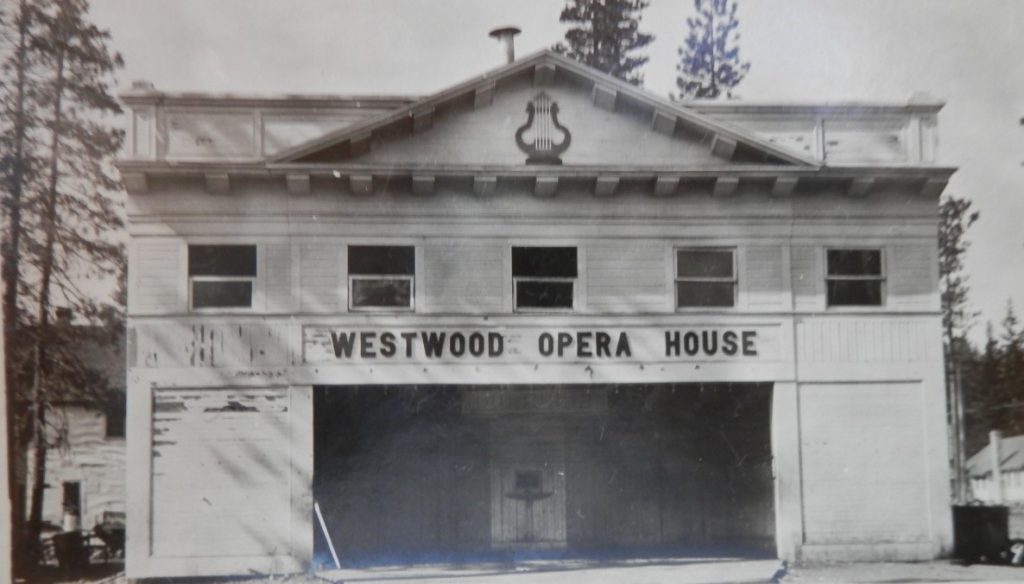
O. MOVIE THEATER: Built in 1925 with a seating capacity of 1100, it was a very large ornate structure that served Westwood until it burned in 1983. The fire was so fierce that it needed borate drops from Forest Service borate bombers before it was finally brought under control.
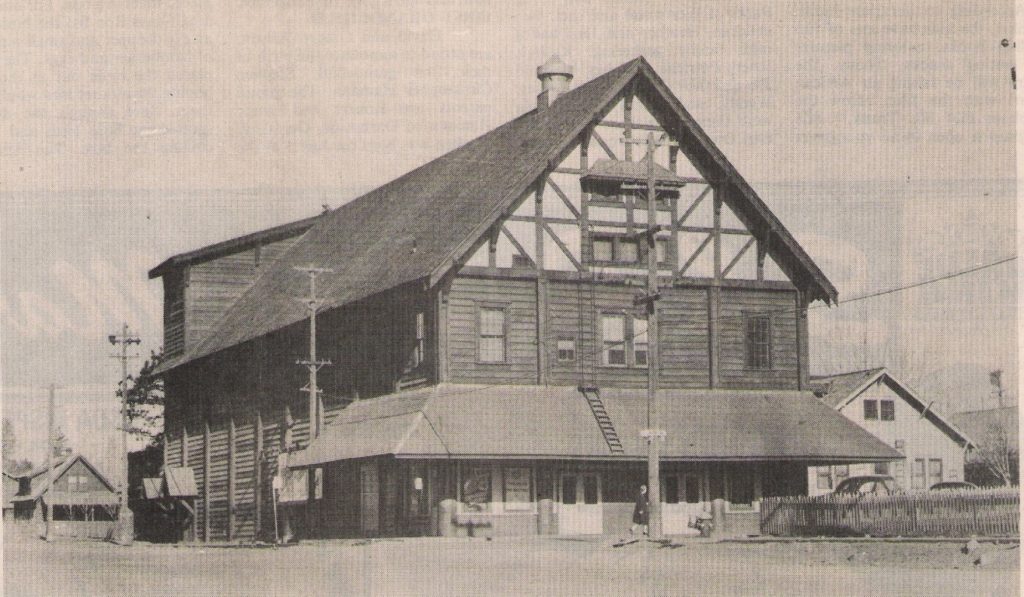
P. RECREATION BUILDING/AUDITORIUM: Built in 1918 for town functions, it was used for basketball games, dances, boxing matches, large public or private meetings and served as a skating rink. As late as 1962, high school basketball games were played here. It continued to serve as a skating ring until at least 1974. It was demolished in 1977.
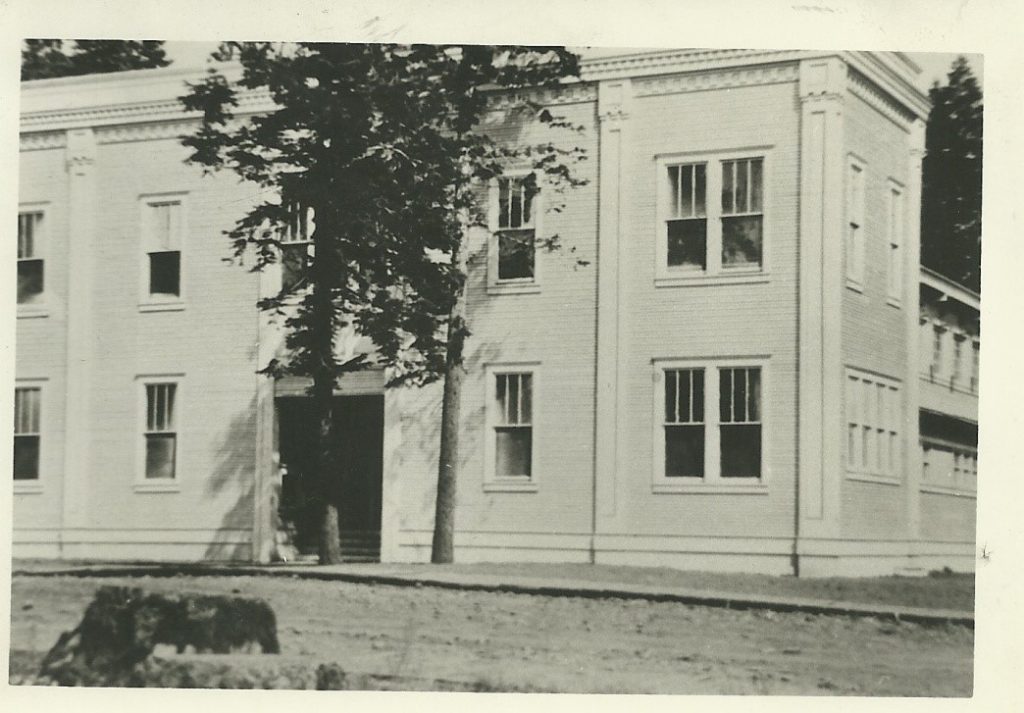
Q. FRATERNAL HALL: Built in 1925 and used primarily by the Masons, it was also used by several other organizations: Odd Fellows, Knights of Pythias, Rotary, and various church groups. It later housed the offices for the Dyer Mountain Project on the lower floor.
R. OUR FIRST LADY OF THE SNOWS CATHOLIC CHURCH: This church was built in 1925 and was used until 2012.
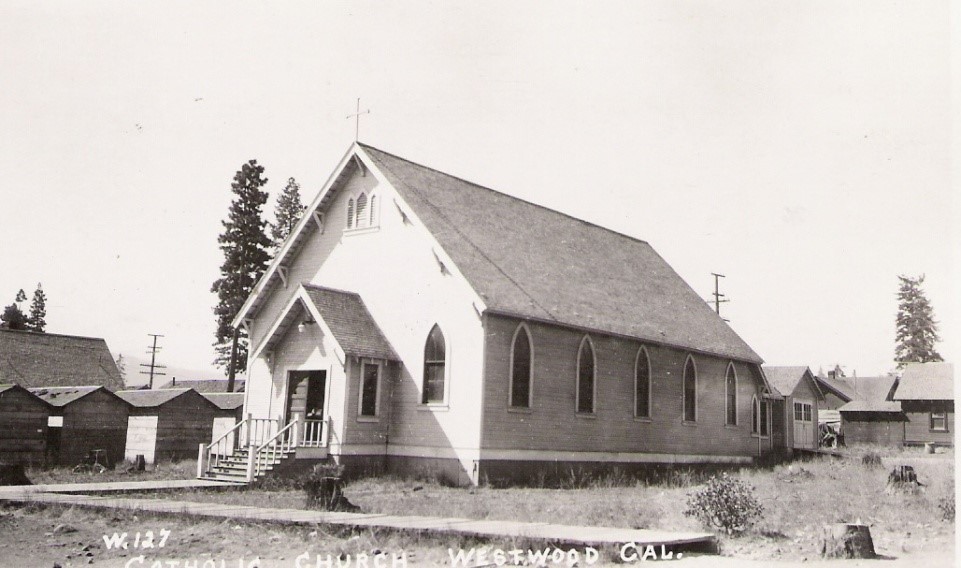
S. THE PEOPLE’S CHURCH: This was a non-denominational church was opened in 1917 with about 600 seat capacity. It was enlarged in 1920 to the present 750-seat capacity. The basement of this church was used as an overflow hospital during the 1918 flu epidemic. It was also later used for a library, a social hall, and various club meetings and dinners. It inherited a pipe organ from the movie theater in 1943.
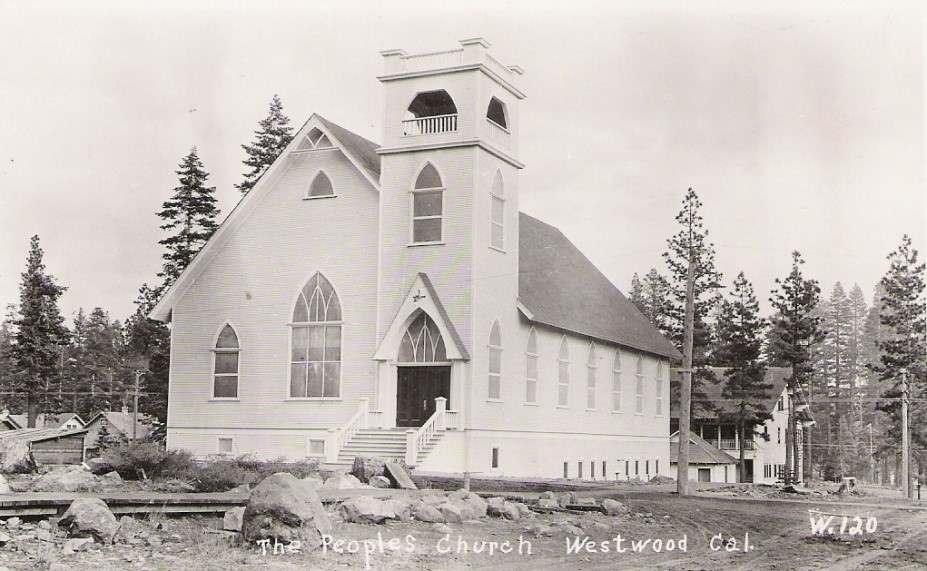
Note: Across the street is THE SCHOOL YARD. The original high school and grammar school buildings were built here in 1918. The high school building, shown below, burned in February 1927.
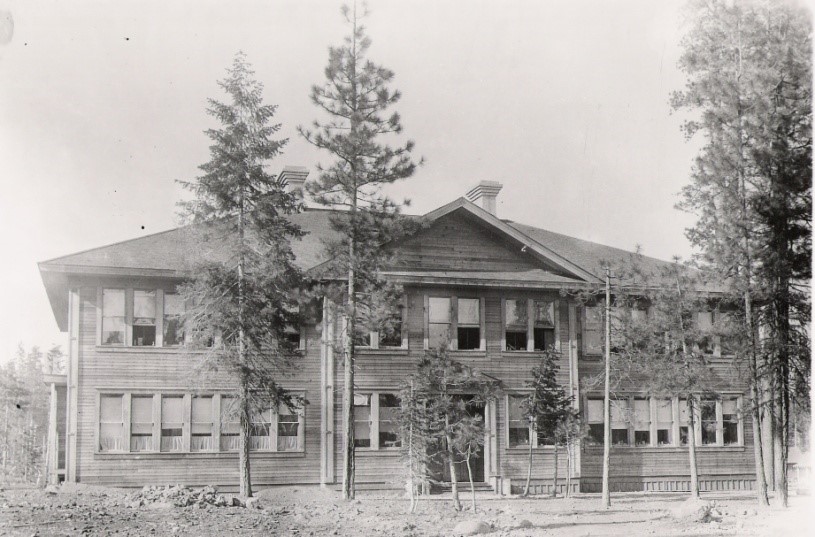
A new building was constructed and occupied in September of that same year. This new building was located at Greenwood and 3rd Street where the California Department of Forestry is now located.
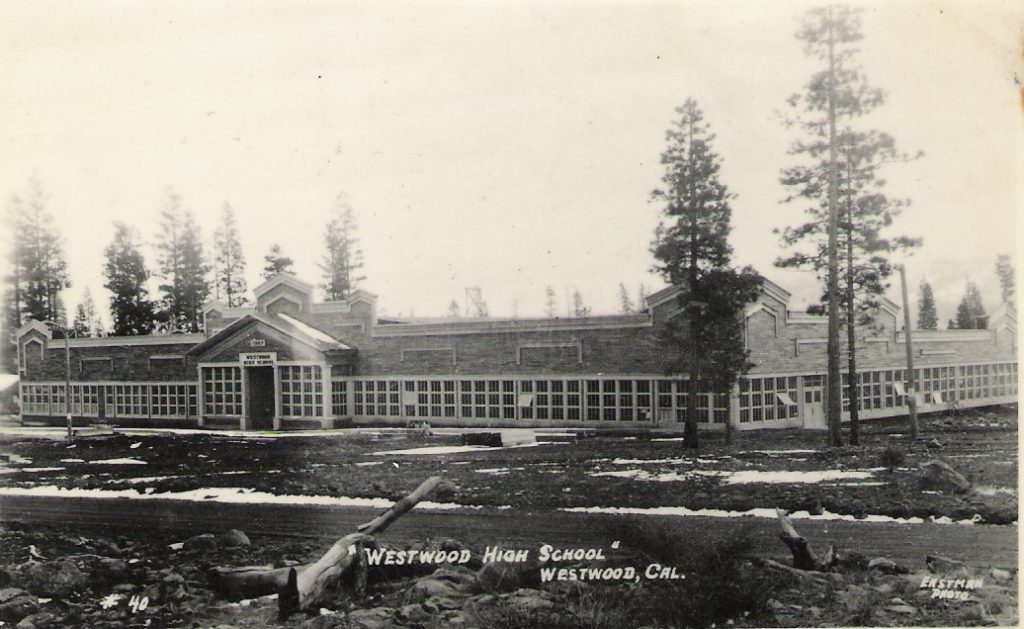
T. DOCTORS’ HOMES: The first two homes on the left down Delwood Street (two homes in the background of photo below) were built in 1917 for Dr. Davis and Dr. Hollingsworth. The homes were located here for convenience to the hospital. Dr. and Mrs. Herman Levin occupied this house from the 1940s through 1995.
U. APARTMENT BUILDING: This building was built in about 1918 for single nurses. It had seven single rooms with a common bath and community kitchen. This building was also located for convenience to the hospital.
V. WESTWOOD HOSPITAL: The hospital was built in 1914 with a 20 bed capacity. It was enlarged in 1918 to a 50 bed capacity. A second story was added in 1925 and the capacity was increased to 100 beds as the mill and employment grew. It was a fully accredited hospital with a fully-outfitted operating room. When Dr. Levin moved here in 1930, he lived in the third floor of the hospital.
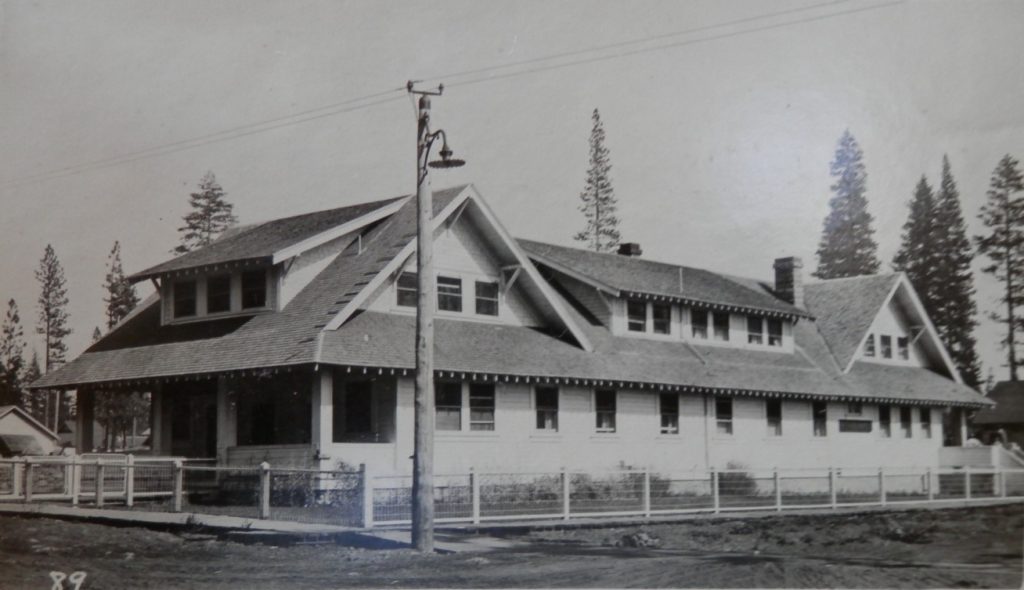
Turn left down Elm Street. Turn left again on 3rd Street and proceed to the end near the visitor Center.
W. THE MILL SITE (1914-1957): Across the tracks at the end of 3rd Street is the site of the Red River Lumber Company Mill. This was the largest pine lumber mill in the world during the 1930s. It occupied over 100 acres, employed about 5,000 people and extended from about 7th Street to about 1st Street, about one mile long and about a half mile wide between the mill pond and the railroad tracks.
The foundations of many of the original buildings are still in this location but the buildings were taken down for the lumber in the 1960s and the 1970s. The only original building remaining is the small concrete pump house sitting on the property directly ahead, next to Robbers Creek.
The property is now privately owned and trespassing is not allowed.
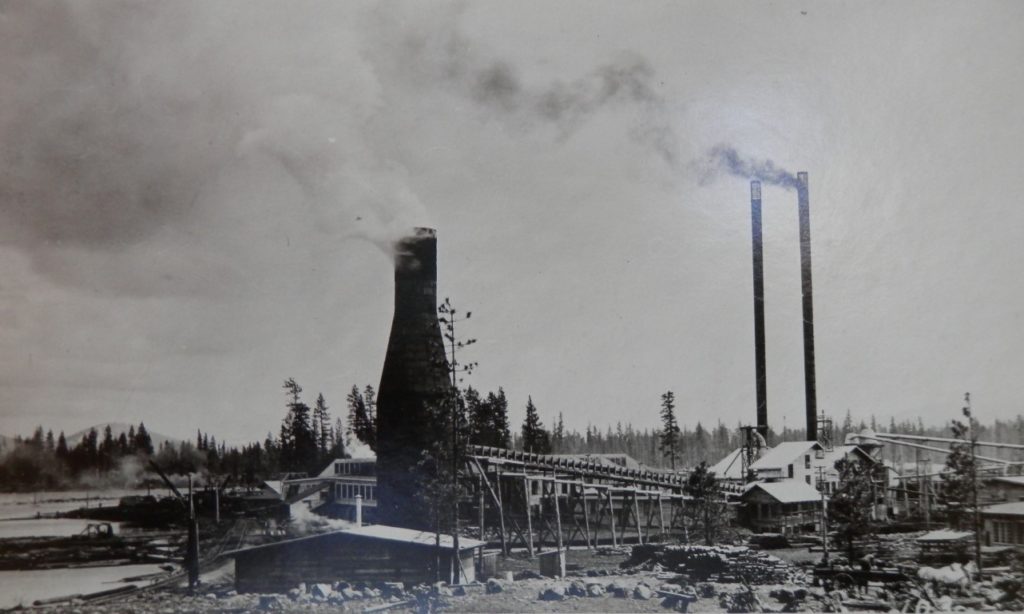
X. THE MILL POND: The pond is behind the mill site and is now very difficult to see because of its lowered water level and the willow trees that have grown up around it. The mill pond originally covered about 320 acres, was about two miles long and could hold over twenty million feet of logs. There were heated sections of the pond so logs could be retrieved during the winter when the pond would freeze over.
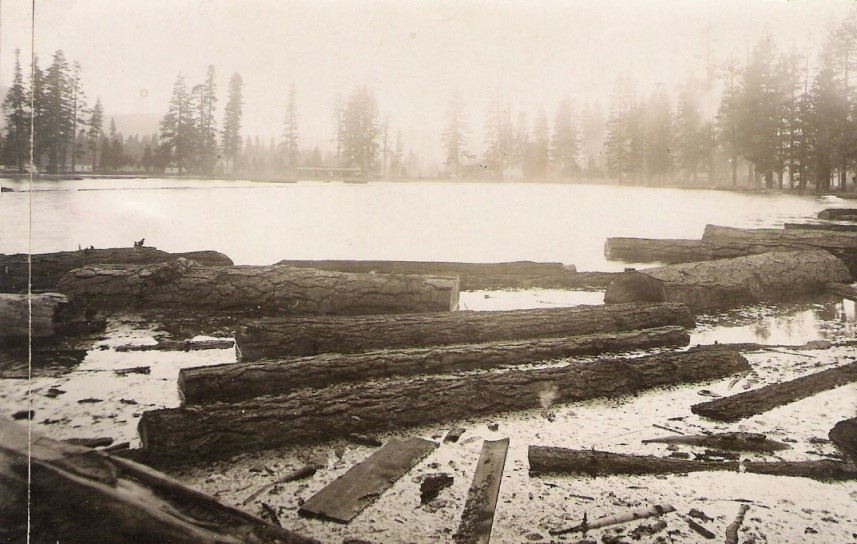
Return to Ash Street and Turn Right
Y. A WALKER HOME: On the left is Moonlight Bar and Grill which is comprised of two different buildings. The part of the building nearest the corner with the very steep roof is the freight storage section of the original Westwood Train Depot. It was salvaged and moved here when the rest of the depot was torn down in 1974. The remainder of the building was originally the home of Willis Walker, a brother of Fletcher Walker and timber manager for Red River Lumber Co. It later became the home for the son of Fletcher Walker, Kenneth Walker and his wife.
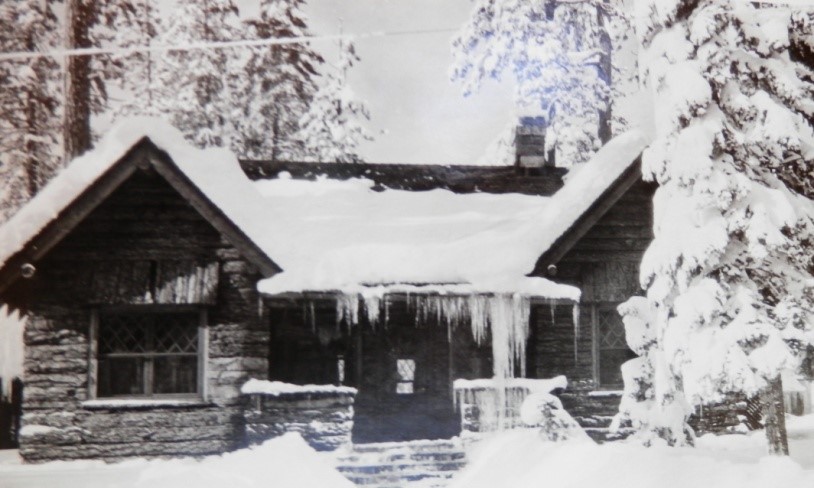
Z. THE BLUE OX INN: In 1917, a hotel was built on this site, now vacant, for visitors to Westwood. It had eighteen rooms on the second floor and ten rooms on the third floor, with common bathrooms at the end of the hallways. The lower floor was a large open room with a fire place, tables, chairs, and couches for visiting, relaxing or reading. It was often used for club meetings and had a small kitchen and rest rooms on this floor for visitors. There was an enclosed porch on the south side of the lower floor for use on summer evenings. The building was demolished in 1962 for the lumber.
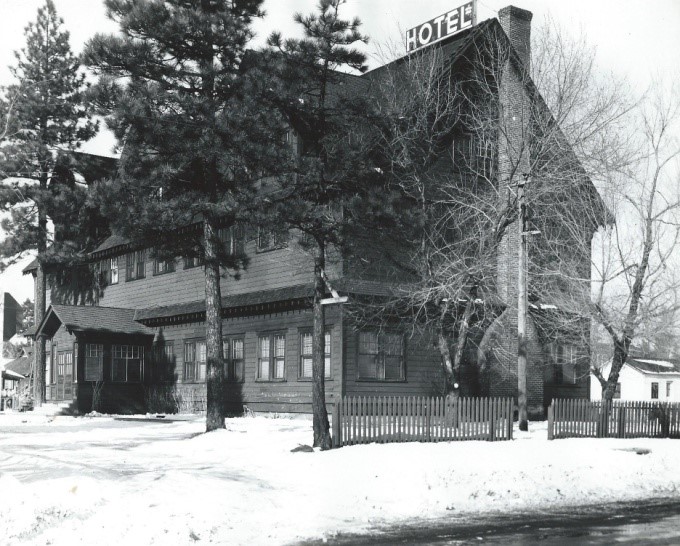
OLD TOWN (Pinetown): Continue down Ash Street to the stop sign and turn right on A-21, crossing the tracks and the bridge over Robbers Creek. The next road on the right, Firland Drive, will take you into Old Town (Pinetown).
This area was the original town site occupied in 1913 and called Walker Camp. A portable circular saw mill, Mill B, was brought in and used to supply lumber to build a sing-band mill and home in Walker Camp.
